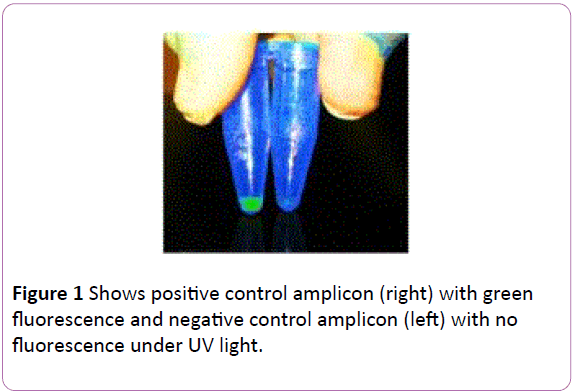Olumide O Adenmosun1,2, Christian Happi3,4, Oluwaseyi Ogunmodede5, Yemi Adesokan6and Obidele Samuel Opeyemi2
1Florida Atlantic University, Boca Raton, Florida, USA
2Bowen University, Iwo Osun State, Nigeria
3Redeemers University, Ede Osun State, Nigeria
4African Centre of Excellence for the Genomics of Infectious Diseases (ACEGID), Nigeria
5University of Medical Sciences, Ondo State Nigeira
6BioInnovation Solutions, Lausanne, Switzerland
Corresponding Author:
Olumide O Adenmosun
Adjunct Instructor, Florida Atlantic University
Biological Sciences, USA
Tel: +19548640860
Email: olucyno@gmail.com and oadenmos@fau.edu
Received date: November 18, 2016; Accepted date: December 20, 2016; Published date: December 27, 2016
Citation: Adenmosun OO, Happi C, Ogunmodede O, et al. Preventing Ebola resurgence from zoonotic routes: A random assessment of Bat populations in Osun State, Nigeria. J Prev Inf Cntrl. 2016, 2:2.
Copyright: © 2016 Adenmosun OO, et al. This is an open-access article distributed under the terms of the Creative Commons Attribution License, which permits unrestricted use, distribution, and reproduction in any medium, provided the original author and source are credited.
Introduction
Etiological studies from the last Ebola pandemic which mainly affected three West African states and Nigeria from July to October 2014 indicated that the primary index case was a two year old boy whose exposure was traced to a colony of insectivorous free-tailed Bats in Guinea while playing in a hollow-tree house. The zoonotic origin of the 2014 Ebola epidemic was further established by molecular analyses of Bat specimens and associated environmental samples [1].
Though the West African epidemic was sustained by uncontrolled human to human transmission, there is still the need to determine the prevalence of Ebola Bats in West Africato guard against the possibility of a future resurgence from zoonotic routes.
This short communication reports the result of a preliminary study aimed at conducting a primary explorative assessment utilizing both serological and genetic diagnostic tools to determine the presence of Ebola virus reservoirs in Bat populations within Nigeria and the West African sub-region.
Results
Since Bats have been associated with the Ebola virus as healthy reservoirs, an initial random assessment was conducted in a small town with large Bat populations in Osun State, Nigeria to check for the presence of Ebola virus genes in Bat blood samples [2]. With limited resources, and ahead of an expansive study, a small sample size was used (Table 1).
| Sample Number |
Positive or Negative |
| 51 |
- |
| 52 |
- |
| 54 |
+ |
| 55 |
+ |
| 59 |
- |
| 62 |
+ |
| 73 |
+ |
| 77 |
- |
| 78 |
- |
| 79 |
- |
| Positive Control |
+ |
Negative Control
(Di. H2O as RNA template) |
- |
Table 1 Fluorescence detection assay results for ten Bat blood samples randomly checked for Ebola virus genes using RT-LAMP.
Adapting from the protocols designed by Kurosaki et al. using the RT- LAMP assay, our group initially tested ten Bat blood samples collected from Iwo town, Osun State, Nigeria [3]. A rapid one-step RNA extraction (RRET-Bioinnovation Solutions Lausanne Switzerland) was used for viral RNA extraction and cDNA synthesis was terminated in 30 min at 63°C using a water bath. Specific LAMP primers targeting the trailer sequence region conserved in all the Ebola virus strains were used in the amplification reaction. Four out of ten blood samples were positive-showing green fluorescence under UV light (at 260 nm-300 nm). Though unspecific, further confirmation by deep sequencing may narrow down actual strains of the Ebola virus type present.
Recommendations and Conclusion
Though the deadliest Ebola pandemic may have gradually passed since it peaked in 2014 with West Africa being the worst hit region, the African continent and other stakeholders are still being challenged with preventive preparedness needs to help combat any future re-emergence from zoonotic routes. One of the model organisms also being studied for possible therapeutic derivatives is this major group of reservoir hosts-which are Bat species (Figure 1).

Figure 1: Shows positive control amplicon (right) with green fluorescence and negative control amplicon (left) with no fluorescence under UV light.
Following a future expansive assessment to be conducted over a wider geographical location within Nigeria and the West African sub-region, we may also explore mining possible therapeutic genetic molecules in Bat tissues-with which they are known to exert a special adaptive or protective immunity against the Ebola virus. Some studies have definitively shown that Bats naturally possess numerous microRNA molecules which have been cross-referenced with known viral bioinformatics databases. Some of these miRNA candidates suggest putative roles in host-virus interaction and are predicted to target genes involved in antiviral immunity [4].
A more expansive diagnostic assessment to identify positive Ebola Bat hosts is therefore recommended around vulnerable geographical regions within Nigeria and neighbouring West- African states where appropriate bio-surveillance and public health control measures may be constituted. Therapeutic microRNA molecules-which are capable of inhibiting or silencing the translational expression of viral proteins from Ebola, can also be mined by appropriate genetic methods from positive Ebola Bat subjects for further clinical research and therapeutic use.
References
- Marí-Saéz A, Weiss S, Nowak K (2015) Investigating the zoonotic origin of the West African Ebola epidemic. EMBO Molecular Medicine 7: 17-23.
- Leroy EM, Kumulungui B, Pourrut X, Pouquet P, Hassanin A, et al. (2005) Fruit bats as reservoir of Ebola virus. Nature 438: 575-576.
- Kurosaki Y, Takada A, Ebihara H (2007) Rapid and simple detection of Ebola virus by reverse transcription-loop-mediated isothermal amplification. J Virol Methods 141: 78-83
- Cowled C, Stewart CR, Likic VA, Friedländer MR, Tachedjian M, et al. (2014) Characterisation of novel microRNAs in the black flying fox (Pteropus alecto) by deep sequencing. BMC Genomics 15: 682.

